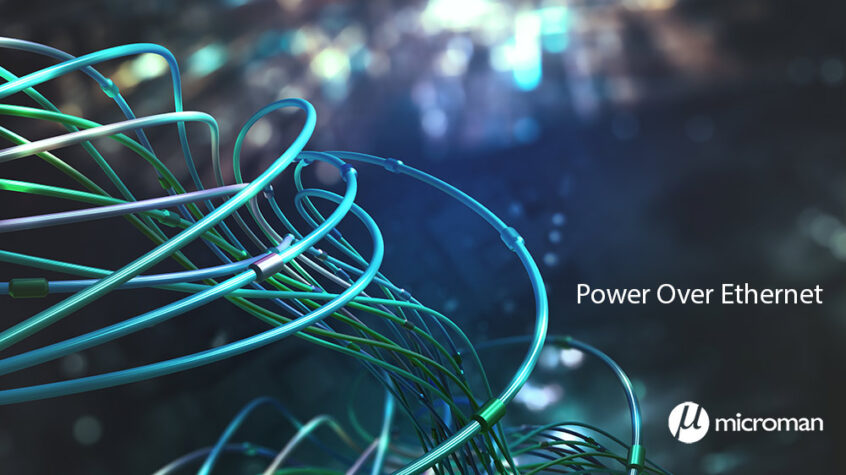PoE technology can be used to power devices where conventional AC power is unavailable or would be prohibitively expensive to provision.
But what about the latest PoE+(+) and UPoE(+) Technologies?
We’re getting a lot of questions about powering devices that demand a power load higher than PoE or PoE+. End users want to know how to leverage new technologies and protect their investment in PoE.
In this post, we’ll discuss some common use cases for legacy power over ethernet users considering a latest-greatest PoE infrastructure upgrade. We’ll also discuss the benefits of current PoE+(+) and UPoE technologies and provide additional technical information and pricing resources.
IEEE codified the standard for PoE in 2003, and it’s been revised twice since then to accommodate higher outputs to power larger devices. Current PoE technologies include PoE+(+) and UPoE, or Universal Power Over Ethernet. UPoE and UPoE+ are proprietary specifications from Cisco Systems.
How Do PoE+(+) and UPoE(+) Fit In?
AC power availability, cost, and access have always posed significant challenges for small businesses and some institutional users (like schools). That challenge created the initial demand for PoE technology and led to its adoption. Our clients in Central Ohio, particularly in education, were early adopters of the technology. Fast forward to today, and our clients need even more distributed power for larger devices. Many of our clients have simply outgrown their legacy PoE infrastructure.
Applications like wireless network build-outs, charging stations, devices, and security systems require more and more power. And when that power is not available, projects are put on hold or even canceled. Existing facilities are running out of power, often provided by legacy PoE devices, for modern electronic systems like phones, security systems, and sophisticated cameras.
Enter the new PoE standards. PoE+(+) and UPoE(+) provide higher wattage to power high-demand devices like wireless access points, CCTV and security cameras, electronic devices, charging stations, phone systems, etc. This is excellent news for facility owners, managers, and operators who may be outgrowing a legacy PoE or PoE+ infrastructure. PoE+(+) and UPoE(+) solutions are available to replace or augment these legacy infrastructures. Microman can help IT and facilities teams evaluate the scope, cost, and feasibility of PoE upgrades.
The result? Users who can’t access conventional AC power, or who have outgrown a legacy PoE infrastructure, can leverage these new standards to deliver additional power where it’s required. There are potentially no new AC power lines, outlets, electricians, or permits required!
What Are Some Common PoE+(+) and UPoE(+) Use Cases?
We’re seeing a wide variety of use cases, from powering high-demand wireless access points to pan, tilt, and zoom surveillance cameras, and even LED lighting The current generation of power over ethernet switches can supply larger devices consuming up to 90W of power per port with higher overall power budget.
Here is a list of potential PoE+(+) and UPoE(+) use cases:
- Legacy PoE Infrastructure Upgrades
- Wireless Access Points
- Surveillance Cameras
- IoT devices
- IP Phone Systems
- Desktop Device Power (Laptops, PDAs, etc.)
- Charging Stations
- A/V Systems
- CCTV Systems
What Are the Capabilities and Limitations of Power Over Ethernet, PoE+(+) and UPoE(+)?
Essentially any device with an ethernet connection can use PoE. The only limitation is that device power consumption may exceed the PoE source’s capability. But with current technologies, project planning, expertise, and careful design considerations, you can typically design around your PoE power consumption needs and existing PoE infrastructure.
Current PoE+(+) and UPoE(+) power sources can power devices up to 60W. The specification is also constantly evolving to support higher power consumption networks. A Cisco UPoE+ interface, for example, can now power devices up to 90W, but it does require a special Cat 6 cable.
So what does the future look like for power over ethernet? Our clients are saving significant time, logistics, and money by deploying PoE+(+) and UPoE(+) solutions where they’ve outgrown an existing legacy PoE implementation.
Where can you go for more info—like how much does it cost to implement PoE+(+) and UPoE(+), what does an installation look like, can you use your legacy infrastructure, etc.?
That’s the easy part. At Microman, we have a team dedicated to designing, implementing, and managing PoE, PoE+(+), and UPoE(+) solutions. We can answer your questions, provide price estimates, and discuss our design and installation services with you and your team.
Are you interested in discussing how you can potentially preserve your investment in PoE and generate additional power for future growth with PoE+(+) and UPoE(+)?
For a fraction of the cost that it would take for you to implement an AC-powered infrastructure, you may be able to take advantage of PoE technology.
At Microman, we focus on providing IT solutions and services for small businesses just like yours. That includes power over ethernet.
Do you have projects on hold due to a lack of AC power? Or have you outgrown a legacy PoE infrastructure? We understand what you’re up against, and we may have cost-effective solutions for you to consider. So we’re offering a free PoE consultation with no obligation or cost.
Call us at 614-792-0645 or Schedule Your Free PoE Assessment Today!



